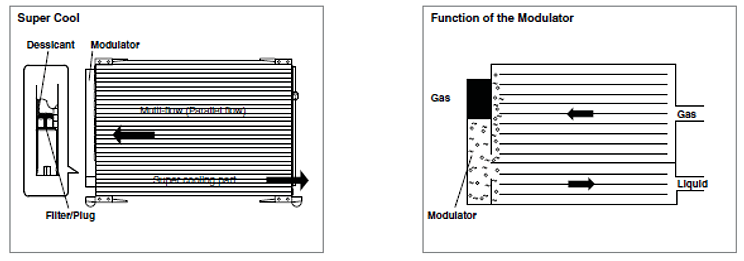Air conditioning operation relies on taking heat out of the passenger compartment by absorbing the heat into a refrigerant, which transports the heat away from the passenger compartment so it can be released to the outside air. The release of the heat to the outside air is done by the condenser, located in the front of the vehicle. By releasing the heat to the cooler outside air, the gaseous refrigerant changes state to a liquid refrigerant. Able to withstand high internal pressures, the condenser passes the liquid refrigerant on to the receiver dryer, or the modulator in the case of a super cool condenser.
A/C Condenser
The condenser is needed to cool refrigerant and turn it back into a liquid in the A/C system.
A/C Condenser
How A/C condensers work

Features and benefits
-
Compact and lightweight design.
-
OE-standard quality and reliability.
-
Manufactured to integrate into any A/C system.
-
Enables peak performance with minimal maintenance.
Types and characteristics
A/C Condenser types
Available in U-shaped and S-shaped models, these types of condenser let the refrigerant flow in the tubes at both ends of the tank simultaneously. Passes are optimized by the presence of partition plates in the tanks.

Otherwise known as a subcool type, these condensers are multi-flow with an integrated gas-liquid separator or modulator. Divided into a condensing and super-cooling section, these types give improved cooling performance.

Characteristics
Designed and manufactured to integrate seamlessly into a vehicle’s air conditioning system, DENSO condensers are compact, lightweight and highly reliable.
Fault finding
Motorists should be urged to get their A/C system checked by a professional whenever they notice a difference in cooling performance. Regular maintenance of the A/C system, including a visual inspection of the condenser for wear and tear, will reduce the risks of costly repairs and ensure trouble-free operation.


